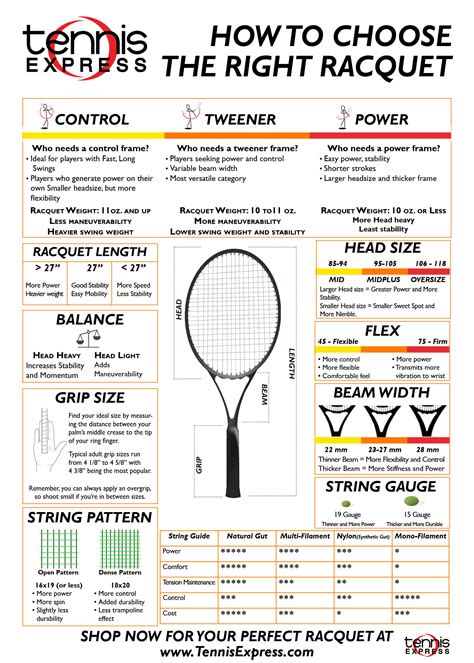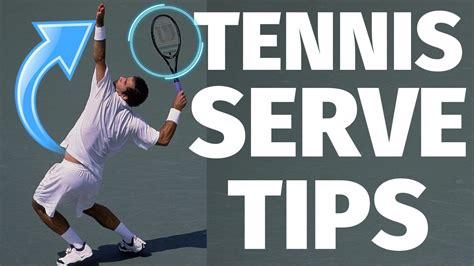Explore how technology enhances tennis training through wearable tech, video analysis, data analytics, and future trends shaping player performance and strategies.In the fast-paced world of modern tennis, the integration of technology has revolutionized training regimens and player development. Today’s athletes are increasingly leveraging advanced tools and techniques that not only enhance performance but also provide valuable insights into every aspect of their game. From wearable tech that tracks physical metrics to sophisticated video analysis that hones technique and strategy, the role of technology in tennis training has never been more pivotal. As we delve into how these innovations are reshaping the approach to training, we’ll explore the benefits of data analytics in tailoring personalized programs and discuss future trends that promise to further transform the landscape of tennis. Join us in discovering how technology is not just an accessory but a game-changer in the quest for excellence on the court.
Introduction To The Role Of Technology In Tennis Training
The implementation of technology in sports has revolutionized training methodologies, and tennis is no exception. Understanding and embracing the role of technology in modern tennis training can give players a significant competitive edge. Tennis academies, professional players, and coaches are increasingly leveraging advanced tools and systems to enhance performance, refine skills, and optimize training sessions.
One of the primary benefits of integrating technology in tennis training is the ability to track and analyze performance metrics in real time. For instance, players can use GPS and heart rate monitors to gather data on their movements and physiological responses during practice and matches. This data aids in the evaluation of endurance, speed, and overall physical conditioning, allowing for more targeted training regimens.
Moreover, technology plays a vital role in skill development. Coaches can utilize video analysis software to review players’ techniques in detail, providing immediate feedback and insights that were previously difficult to achieve. This encourages a more analytical approach to training, where players can see their progress visually and make adjustments accordingly.
Additionally, the implementation of interactive tools and simulations enhances mental training, which is essential for success on the court. Embracing the role of technology in this capacity ensures that players not only develop their physical skills but also solidify their mental game.
By understanding and applying the role of technology in tennis training, players and coaches can tailor their tactics, improve training efficiency, and ultimately drive better results on the court.
Integrating Wearable Tech To Enhance Player Performance
Wearable technology is revolutionizing the world of sports, and tennis is no exception. By integrating wearables into training regimens, players can monitor various physiological metrics that contribute to performance enhancement. These devices can collect data on heart rate, calories burned, steps taken, and even swing speed, which are crucial for analyzing the overall effectiveness of a player’s training program.
One of the key benefits of using wearable tech is the ability to provide real-time feedback. Players can gain immediate insights into their performance during training sessions, allowing them to make on-the-fly adjustments. For instance, if a player notices high heart rates during certain drills, they can adjust their intensity or focus on recovery strategies.
Moreover, the role of wearables extends to injury prevention. By continuously monitoring metrics like fatigue levels and movement patterns, players can identify potential injury risks before they manifest. This proactive approach enables trainers to modify training loads and ensure athletes remain within safe operational limits.
Additionally, wearables can enhance communication between coaches and players. Data from these devices can be uploaded to cloud platforms, making it easier for coaches to analyze and devise personalized training plans. This level of customization enables a more targeted training approach, ensuring that each player develops their full potential based on objective data.
As technology continues to evolve, the integration of wearable tech promises to become even more seamless, further enhancing the role of technology in modern tennis training. Embracing these advancements can help players gain a competitive edge, refine their skills, and maintain peak physical condition throughout the season.
Utilizing Video Analysis To Improve Technique And Strategy
Video analysis has become an essential tool in understanding and refining a player’s performance on the tennis court. Coaches and players can now capture high-resolution footage of training sessions and matches to dissect their techniques and strategies in great detail.
One of the primary benefits of video analysis is the ability to assess a player’s stroke mechanics. With slow-motion playback, players can visually examine their swing path, footwork, and follow-through. This level of scrutiny allows athletes to identify specific areas for improvement, ensuring that they can implement the necessary adjustments in their training. For example, a player might notice that their serve lacks power due to improper body positioning or that their backhand could be enhanced by adjusting their grip.
Moreover, video analysis facilitates strategic planning. By reviewing footage of opponents’ matches, players and coaches can identify strengths, weaknesses, and patterns in their gameplay. This insight enables athletes to design tailored strategies that capitalize on their opponents’ weaknesses while fortifying their own defensive play. The ability to analyze match footage allows players to enter competitions with a clearer and more confident game plan.
Incorporating video analysis into training regimes not only enhances individual skill but also fosters better communication between coaches and players. The visual feedback provided by video analysis fosters a mutual understanding of goals and expectations, creating a more collaborative training environment.
As technology continues to evolve, the role of video analysis in tennis training will undoubtedly expand. With innovations such as augmented reality and real-time analytics, players can look forward to even more advanced ways to refine their gameplay, ensuring they stay competitive in an increasingly technological world.
The Role Of Data Analytics In Tailoring Training Programs
In today’s fast-paced world of sports, data analytics has become an indispensable tool, especially in tennis. By harnessing the power of data, coaches and players can gain insightful perspectives on performance metrics that significantly influence training programs. The role of data analytics extends beyond mere statistics; it helps in creating personalized training regimens that cater to the unique strengths and weaknesses of each athlete.
Data analytics can assess various parameters, such as stroke accuracy, shot selection, serve speed, and court coverage. These metrics enable trainers to identify specific areas for improvement, ensuring that each training session is focused and effective. For instance, analytics can reveal patterns in shot distribution, allowing coaches to personalize drills that enhance a player’s tactical strategies during matches.
Moreover, advanced analytics techniques can aggregate data from multiple sources, including game statistics, wearable technology, and video analysis. This comprehensive approach provides a holistic view of a player’s performance, which is crucial for understanding trends over time. Coaches can use this information to adjust training regimens dynamically, promoting a more responsive and adaptive training environment.
Another key aspect of the role of data analytics is injury prevention. By analyzing training loads, movement patterns, and biomechanics, players can be protected from overexertion and the risk of injury. By interpreting these data points, coaches can tailor workout intensity and volume, ensuring athletes are both challenged and safe during their training.
Overall, the integration of data analytics into tennis training represents a significant evolution in how athletes prepare for competition. Coaches who effectively leverage this technology will find themselves better equipped to enhance their players’ performance and maximize their potential on the court.
Future Trends: The Evolving Role Of Technology In Tennis
The future of tennis training is poised for significant transformation as technology continues to advance at an unprecedented pace. As we look forward, several key trends are emerging that will further reshape the role of technology in the sport.
One of the most exciting developments is the integration of artificial intelligence (AI) in tennis analytics. AI systems are becoming increasingly capable of analyzing vast amounts of data in real-time, providing coaches and players with insights that were previously unimaginable. This can lead to more personalized training regimens and better in-game strategies.
Moreover, the use of augmented reality (AR) is expected to gain traction in training sessions. Players will be able to visualize tactics and techniques in a 3D space, allowing them to practice and understand maneuvers in a more immersive way. Training programs can harness AR to create tailored simulations that adapt to a player’s strengths and weaknesses.
Another trend is the rise of remote coaching facilitated by technology. With advancements in communication tools and video conferencing technology, athletes can receive coaching from experts anywhere in the world. This accessibility enables a broader range of players to benefit from high-level coaching, regardless of location.
Furthermore, biotechnological innovations, such as injury prevention tools and wearable sensors, are becoming more prevalent. These technologies allow for continuous monitoring of player health, facilitating timely interventions that can extend careers and enhance well-being. As medical advancements continue, we may see even more sophisticated solutions for managing player health.
Sustainability in sports tech will become increasingly important. Eco-friendly technologies and practices in tennis training—ranging from energy-efficient equipment to sustainable facility management—will become part of the conversation as the sport embraces environmental responsibility.
the role of technology in tennis training is evolving rapidly, with innovations that enhance performance, strategy, and player well-being. As these trends continue to develop, they promise to unlock new levels of performance for players while broadening access to the sport globally.
Frequently Asked Questions
How has technology changed tennis training?
Technology has revolutionized tennis training by providing advanced analytics, video analysis, and training apps that enhance player performance and strategy.
What types of technology are commonly used in tennis training?
Common technologies include shot-tracking systems, wearable devices, video analysis software, and virtual reality training tools.
Can technology help prevent injuries in tennis players?
Yes, technology can analyze players’ biomechanics and training loads, helping coaches identify potential injury risks and adapt training regimens accordingly.
How do players use video analysis in their training?
Players use video analysis to review their techniques, study their opponents, and refine their strategies by breaking down video footage of their performances.
What are the benefits of using wearable technology in tennis?
Wearable technology can monitor players’ heart rates, body temperature, and movement patterns, providing insights that can improve fitness and training effectiveness.
Are there any drawbacks to using technology in tennis training?
While technology can enhance training, it may also lead to over-reliance on data, potentially detracting from instinctual play and traditional coaching methods.
How is virtual reality being used in tennis training?
Virtual reality is being used to simulate match scenarios, allowing players to practice decision-making and tactics in a controlled environment without physical strain.









